APAD 177: A sign…
.. of a successful community-based initiative in Cambodia. I’m proud to have been a part of this success story. You can find the story in my previous post here.
More signs all over the world at Signs, Signs. Please do have a look.
Read More>Litratong Pinoy #011 and 012: Kompyuter Ko, Luma Na
Ito ang aking kompyuter na 4 na taon na akong pinagseserbisyuhan. Minabuti kong ito ang isali para sa linggong ito at sa nakaarang lingo dahil, sa aking palagay, ay angkop sa dalawang tema – kompyuter at luma na – dahil ang kompyuter ko ay luma na!
Nuong 2006, ako ay nag-umpisang magtrabaho sa isang rural ICT (Information and Communications Technology) project dito sa Cambodia, na ang layunin ay ilapit sa mga magsasaka at mangingisda ang sari-saring teknolohiya ng ICT at bumuo ng isang community-owned ICT enterprises sa rural areas upang mapa-unlad ang kani-kanilang pamumuhay dahil dito.
Ito ay kasalukuyang ipinapatupad sa dalawang komunidad sa Cambodia. Ako ay pansamantalang tumira sa lalawigan ng Kep kung saan ang proyekto ay ipainapatupad. Ang kompyuter na ito ang aking gamit sa pag-iikot sa labing-isang baryo habang hinihintay ko ang kompyuter na galling sa opisina. Sa maniwala kayo o hindi, ito ang kauna-unahang kompyuter na nakita, at nahawakan, ng mga tao duon. Kung inyong mapapansin sa mga litrato sa ibaba na halos matatanda lahat ang dumalo sa aking pagbibigay ng orientation o pagpapakilala sa mga tao kung ano ang kompyuter at ang mga bagay na nagagawa gamit nito. Hindi ibig sabihin na hindi interesado ang mga kabataan sa kompyuter. Nagkataon lang na aming unang inimbitahan ang mga mey khum at mey sangkat, mga village at commune leaders, na siyang unang hakbang na ginawa namin upang mas madali ang pagtanggap ng mga tao sa aming proyekto.
Sa simula ay takot silang hawakan ang kompyuter sa kadahilanang ito ay sasabog o masira. Subalit ng ito’y kanilang mahawakan at masubukan ang iba’t-ibang features ng computer, lahat silay natuwa na parang mga bata na may bagong laruan.
Pahabol:
Ang mga sumusunod na litrato naman ay kuha isang taon ang makalipas kung saan 4 na e-community centers ang aming naitayo. Ang e-community ay parang isang conventional na tele-center, konektado sa satellite, gamit ang solar power para sa internet at VoIP calls. Makikita sa mga litrato ang tuwa at saya, di lang ng mga bata kundi pati na ng mga matatanda, lalo na’t nakakatawag at natatawagan na sila ng kanilang mga kamag-anak sa Phnom Penh at sa iba’t-ibang bahagi ng mundo.
Read More>Wordless Wednesday #55: Working girl
My entry for the Tuesday-Wednesday edition. Taken in Dhaka, Bangladesh in December, 2002. After getting off a bus, I chanced upon this pretty girl, roaming around with this mat on her head. Through my interpreter, I learned that this girl is one of the many displaced people in Bangladesh. She used to live along the Buriganga river and constant floodings swept away her family’s house and livelihood. This drove them to the capital of Dhaka where they have no permanent shelter and no food to eat. She earns money picking garbages and, sometimes, begging, too.
For more wordless, visit Wordless Wednesday.
Read More>Litratong Pinoy #009 : Mithi (Wish)
Sa uulitin, nais ko pong ihabol ang aking litrato para sa linggong ito. Ang tema ngayong linggo ay mithi, o wish, sa wikang Filipino. Kaya naman ito po ang aking naisipang isali:
Bata pa ako ay talagang pinangarap ko nang makita ng malapitan ang Mt. Everest na siyang tinaguriang pinakamataas na bundok sa buong mundo. Kung hindi naman ito posible ay kahit na lamang sa paanan nito. Natupad naman ang minimithi kong ito nuong nakaraang Disyembre nang ako ay pumunta ng Nepal para sa isang conference. Hindi man ako nakasama sa mga duon sa chartered flight papuntang tuktok mismo, nakita ko naman ito mula sa bintana ng eroplanong sinakyan ko pauwi. Tulad ng Mayon Volcano, hindi basta-basta nagpapakita ang Mt. Everest, kaya dyan sa litrato ang tuktok nito ay nakabalot sa ulap. Sayang, ano po?
Pero teka, yan nga ba ang Mt. Everest? Kayo na po ang humusga dahil ako man ay nalilito kung alin dyan ang bundok na pakay ko *lol*
Sana sa susunod, makapunta naman ako sa Bhutan, Tibet at Mongolia. Iyan ang mga pinapangarap kong puntahang mga bansa dito sa Asya.
Read MoreCheck out other Wordless Wednesday photos.
n.b.: Please excuse me, I know it is supposed to be wordless but I couldn’t help but explain the link between Buddhism, Cambodia’s religion, and the forests.
A lot of things has been said about the forests of Cambodia and one thing is for sure – the forests are rapidly disappearing with the country’s opening to a market-oriented economy. Here’s a section of what I wrote years ago:
Forest cover has decreased from over 70% in 1970 to around 35% today (depending on which source you are using), and many globally important mammals such as kouprey, tigers, and elephants are on the path to extinction. The forests, upon which local people depended for firewood, medicines, building materials, and religious or spiritual value, have been ruthlessly destroyed by logging companies.
Given the traditional prestige of Buddhist monks among the population and the natural ecological orientation of Buddhism as a belief system and way of life, monks are a prime target group for environmental education and awareness (EE) programs in Cambodia. They are capable of playing an important social role in guiding local populations in understanding, protecting, and improving the environment and in exerting moral pressure on those abusing the environment to change their behavior. A complementary relationship exists between pagodas (the wats and the watarams – the temples and their compounds) and their villages, instructing and providing guidance for the local populations on ethical and practical aspects of environmental protection, management, and enhancement.
To read more, you can find the whole post about my work with the Cambodian Buddhist monks here.
Read More>Wordless Wednesday #29: Buddhism and Forestry
Check out other Wordless Wednesday photos.
n.b.: Please excuse me, I know it is supposed to be wordless but I couldn’t help but explain the link between Buddhism, Cambodia’s religion, and the forests.
A lot of things has been said about the forests of Cambodia and one thing is for sure – the forests are rapidly disappearing with the country’s opening to a market-oriented economy. Here’s a section of what I wrote years ago:
Forest cover has decreased from over 70% in 1970 to around 35% today (depending on which source you are using), and many globally important mammals such as kouprey, tigers, and elephants are on the path to extinction. The forests, upon which local people depended for firewood, medicines, building materials, and religious or spiritual value, have been ruthlessly destroyed by logging companies.
Given the traditional prestige of Buddhist monks among the population and the natural ecological orientation of Buddhism as a belief system and way of life, monks are a prime target group for environmental education and awareness (EE) programs in Cambodia. They are capable of playing an important social role in guiding local populations in understanding, protecting, and improving the environment and in exerting moral pressure on those abusing the environment to change their behavior. A complementary relationship exists between pagodas (the wats and the watarams – the temples and their compounds) and their villages, instructing and providing guidance for the local populations on ethical and practical aspects of environmental protection, management, and enhancement.
To read more, you can find the whole post about my work with the Cambodian Buddhist monks here.
Read More





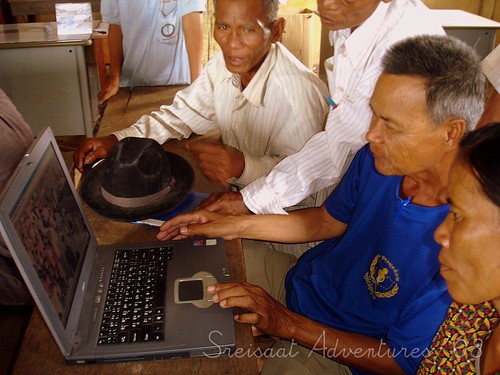
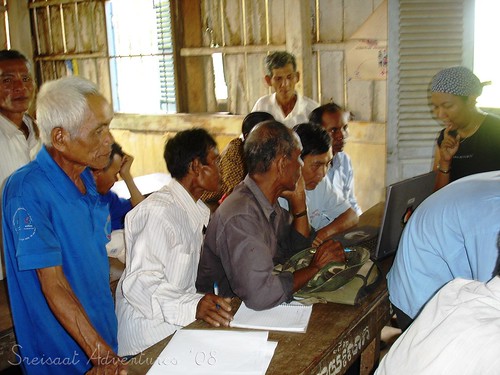
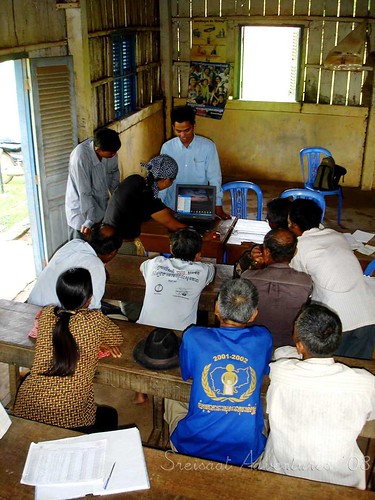
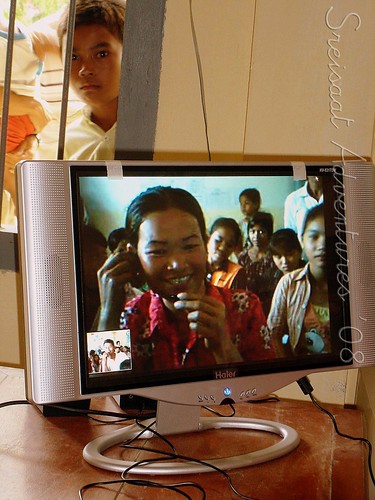
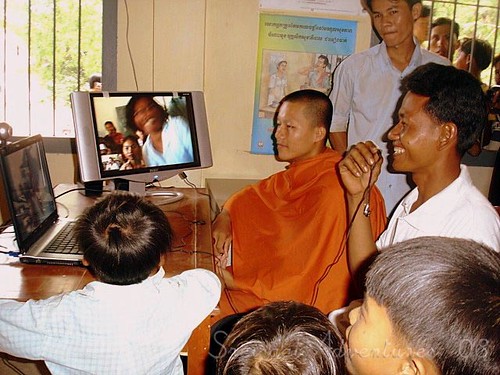

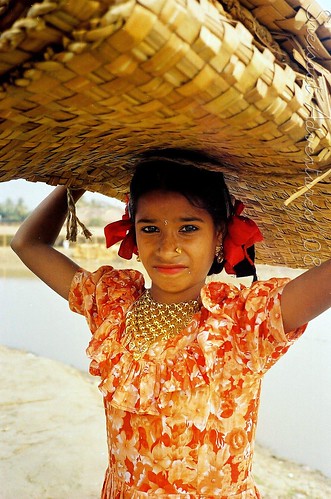
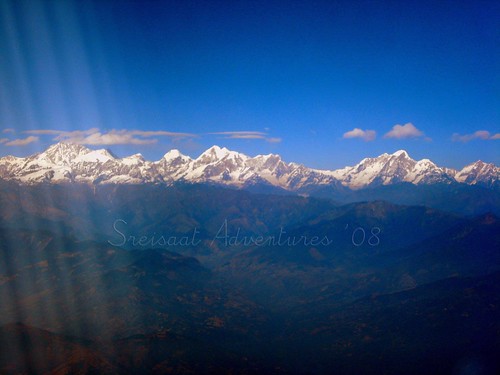
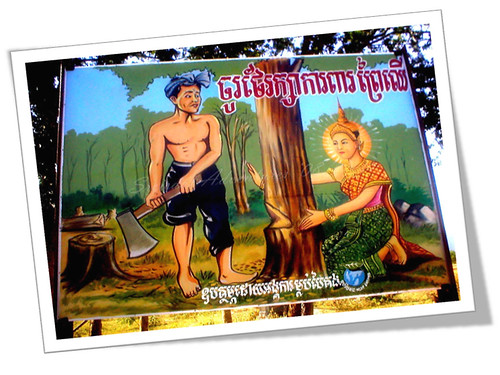




Follow Us!